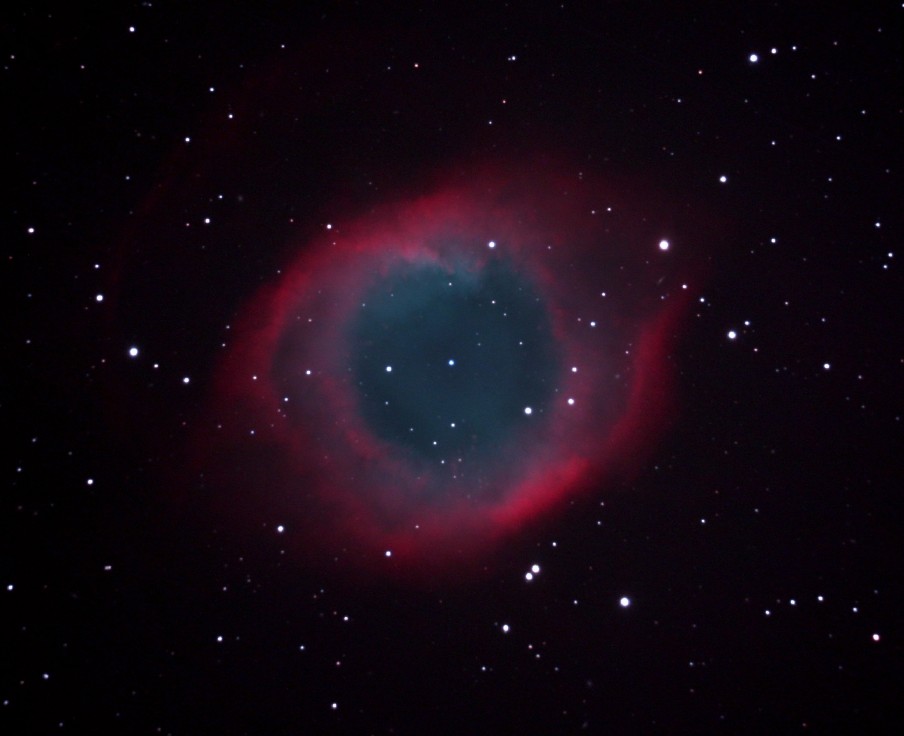
|
|
| C63, Helix Nebula (NGC 7293) |
|
Wreaths placed around dying stars, - that's how some have described planetary nebulae like these. Visible here are what may appear to be three main rings, but closer examination reveals it is a single spring like or helical coil. It all came from the slightly bluish star in the center. That star used to be like our sun, but it's 4-5 billion years older, and is showing what may happen to our sun when it reaches the end of it's main phase. The coil and blue/green central area are the sloughed off outer layers of the original star. The central area is mostly extremely hot glowing oxygen, the red is ionized hydrogen. Why there is a coil structure, and why it's all about the same diameter is a continuing subject of speculation. C63 is the nearest planetary nebula to us, only 450 light years away. Because of it's proximity, it is one of the most thoroughly studied nebula. The Helix Nebula is located low in the late summer sky, east of the Milky Way in the constellation of Aquarius. It's about half the size of the full moon, but it can't be easily seen except with a 4" or larger scope. Even then, it's only the bluish area that can be seen. The red coil shows up well on a digital photo with a camera that's been spectrum enhanced for astronomical purposes, but the human eye is not nearly as sensitive to the otherwise distinctive red. |
|
10"
F7.8
Schmidt Cassgrain reflector, Canon 5D Mark II - Astro spectrum enhanced, IDAS P2 light pollution
filter |